In December of 2013, I wrote an article comparing the cost of
buying into Legacy versus maintaining a top tier Standard collection. The conclusion I came to was that Standard would outpace Legacy about halfway through
year three, making the Eternal format a better long term investment due to its stability. Even on the budget side of both formats, Legacy and Standard are
roughly equivalent as long as you project your cost out at least four years. And that doesn’t count the resale value of the cards once you’re done with
them-another advantage Legacy has over Standard.
Of course, my entire premise hinges on the belief that you can buy into a top tier Legacy deck and use it for years without having to pick up more than a
handful of new or breakout cards every season. I backed up my math with a rough comparison between the Legacy metagame in 2009 and 2013, but many people
were still skeptical about how my premise would hold up going forward. After all, coverage and Magic writing continues to get better and more pervasive.
Might one or two cards or strategies come along and warp the Legacy metagame overnight?
While some people felt that the Treasure Cruise ban in January was heavy-handed, it did provide an interesting case study. For several months, every deck
in the format either had to play Treasure Cruise or figure out a way to answer the overwhelming card advantage it gave to burn and Delver decks. Even
still, the Top 8 at Grand Prix New Jersey featured Miracles, Storm, Infect, U/W Stoneblade, and MUD alongside the Treasure Cruise decks. And even after
that fairly diverse Top 8, Wizards decided that Treasure Cruise had to go. I think it’s safe to say that the fabric of Legacy isn’t changing drastically
any time soon. If the long-term value of your collection is your primary concern, Legacy is still the best format for you.
Of course, most players aren’t choosing between these two formats-they’re deciding whether or not it makes sense to drop a few thousand dollars on a Legacy
deck that they might only get to use a few times a year in addition to maintaining their existing Standard collection. The vast majority of Constructed
tournaments are Standard, after all, and getting to play with the latest cards is a big part of what makes Magic fun. For these people, the question isn’t
whether or not Legacy is cheaper than Standard-it’s whether or not you can actually buy a Legacy deck, play it for a couple of years, and then cash out
without losing any money.
So this week, I’m going to examine the 2013 Legacy decks I recommended side-by-side with their 2015 counterparts. Have any of them changed significantly in
the last sixteen months? Have any of them fallen out of favor or been hated out of the format to the point where they’re unplayable? We’re going to see
whether or not my declaration that each deck probably would only need a few minor tweaks over the next few years actually came true. After that, we’ll take
a quick look at a few other Legacy decks that have become popular in recent months. Lastly, we’ll analyze the list of format staples that I put forth in my
2013 article, take a look at how the card prices have shifted over the last sixteen months, and update it for today. That way, we can see if people who
bought into the format two years ago have made a profit.
Let’s start by examining a deck that has thrived over the past couple of years despite a fancy name change. I’m talking, of course, about-
Jeskai Delver
Here’s the list that I recommended in 2013:
Creatures (10)
Lands (20)
Spells (30)

Compare that to the deck that won a StarCityGames Invitational Qualifier just a couple of weeks ago:
Creatures (11)
Lands (19)
Spells (30)

IN:
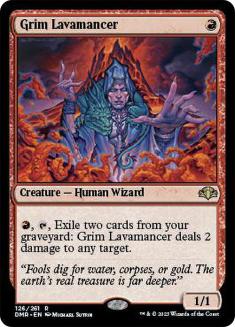
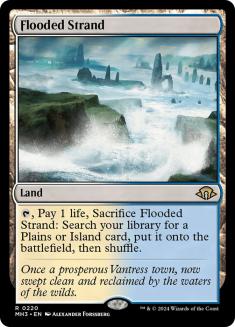

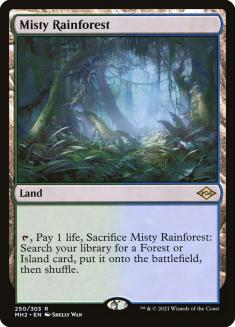
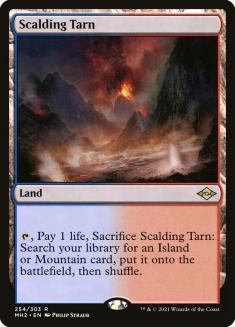
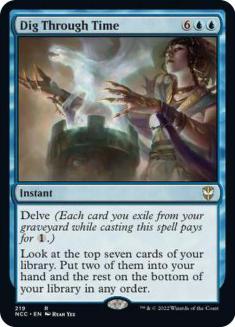

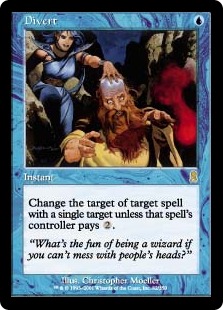

OUT:
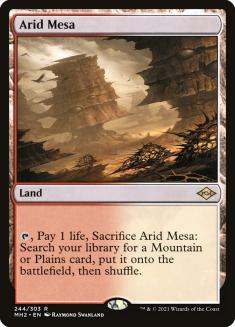



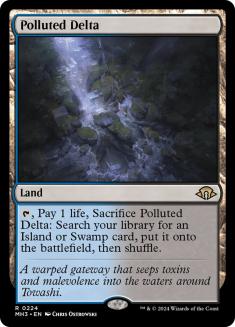
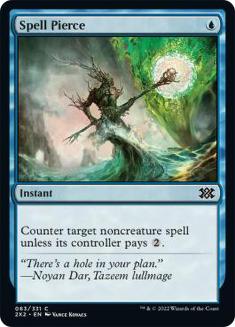

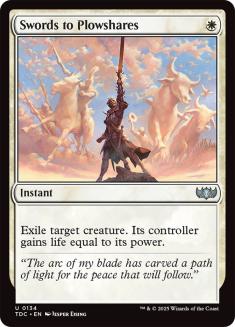

So far, so good. Steven Slone’s list is almost identical to the Jeskai Delver list that we examined back in 2013. Slone runs maindeck copies of Dig Through
Time and Divert, but those cards aren’t terribly pricey. The manabase is slightly different in terms of which fetchlands are being used, but that’s usually
a matter of personal preference anyway. The biggest financial addition? Two or three copies of Containment Priest for the sideboard will set you back
$17.25 apiece.
Even better for your 2013 investment, there are now top Delver decks in Temur, Grixis, and Sultai colors. Fish-style decks were solid sixteen months ago,
but they’ve only improved and branched out since then. In addition to a slightly different manabase,
the Temur list that Jacob Wilson took to a first place finish at the Invitational
runs Nimble Mongoose, Tarmogoyf, Dismember, and Stifle-not a bad financial outlay if you’ve already got your set of Tarmogoyfs and dual lands, but
incredibly expensive if you don’t.
The Grixis list
runs Young Pyromancer, Monastery Swiftspear, Tasigur, the Golden Fang, and even Gurmag Angler. This deck might be suboptimal, though-I haven’t seen more
than one or two Grixis lists since the Treasure Cruse ban, so there aren’t a lot of great comparison points at the moment.
The Sultai list is a little more battle-tested. It runs Dark
Confidant, Deathrite Shaman, Tarmogoyf, Abrupt Decay, Stifle, and Disfigure, which you might have lying around if you play Abzan or Jund in Modern. Some of
these cards are expensive additions, but none of them are untradeable corner cases that require this specific Legacy deck to be good. If you’re an
experienced Eternal player, you probably have most of these cards already.
Sneak and Show
Sneak and Show isn’t the force it was in 2013, but it’s still a fine deck to sleeve up and bring to an Open. Here’s the list we worked with back in 2013:
Creatures (8)
Lands (19)
Spells (33)

Uh, yeah. Ignore the part where the deck is being piloted by player who is now banned for cheating. We were all a little more naive back in 2013. At any
rate, here’s Daniel Cosiem’s IQ-winning build from January 25th of this year:
Creatures (8)
Lands (19)
Spells (33)
- 4 Brainstorm
- 4 Show and Tell
- 4 Force of Will
- 1 Intuition
- 4 Sneak Attack
- 4 Lotus Petal
- 4 Ponder
- 4 Spell Pierce
- 4 Gitaxian Probe
Sideboard

IN:




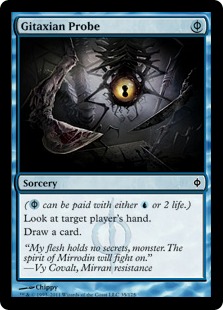

OUT
:



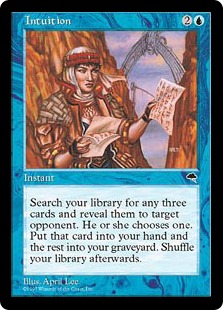
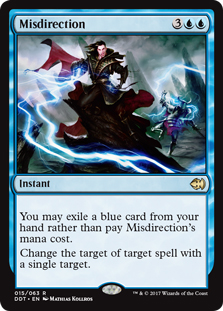

Misty Rainforest and Polluted Delta are essentially the same card in this deck, as neither build runs Forests or Swamps. Misty Rainforest was cheaper in
2013, though, and Polluted Deltas are easier to get today, so that’s probably why Cosiem changed it up. Otherwise, the additions are all incredibly minor.
If you brought your 2013 deck to a Legacy tournament tomorrow, it would still be considered a tuned and optimal build.
There’s also now a second top deck that you can build with many of the same cards. Check out this second place OmniTell list from an IQ on February 22nd:
Creatures (1)
Lands (20)
Spells (39)

The big additions here are Dream Halls, Omniscience, Cunning Wish, and Enter the Infinite. While this version of Show and Tell hasn’t quite surpassed Sneak
and Show in popularity on paper, it’s twice as popular on Magic Online. Most of that gap is financial-four copies of Sneak Attack plus four copies of
Griselbrand will set you back almost three hundred dollars on MTGO-but recent results have been quite promising. Sixteen months from now, we might have two
elite Show and Tell decks in the format.
Dredge
Dredge wasn’t a perfect deck choice in 2013, and it isn’t a perfect deck choice now. It is, however, still the cheapest deck in the format that can rack up
wins on a regular basis.
Here’s the build we analyzed in my previous article:
Creatures (21)
- 3 Ichorid
- 1 Flame-Kin Zealot
- 4 Golgari Grave-Troll
- 3 Golgari Thug
- 4 Stinkweed Imp
- 4 Narcomoeba
- 2 Griselbrand
Lands (12)
Spells (27)

And here’s the best version of 2015 Dredge that I could dig up. It’s a fourth place finish from a Super IQ on February 15th:
Creatures (26)
- 3 Putrid Imp
- 4 Ichorid
- 1 Flame-Kin Zealot
- 4 Golgari Grave-Troll
- 3 Golgari Thug
- 4 Stinkweed Imp
- 4 Narcomoeba
- 3 Street Wraith
Lands (12)
Spells (22)

IN:
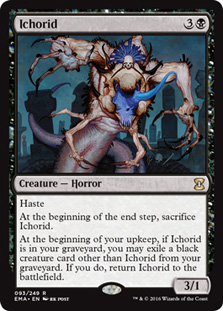
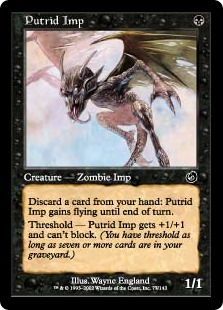


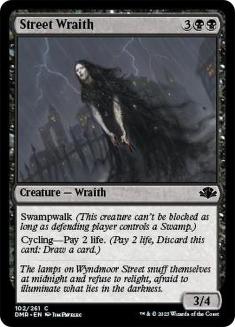


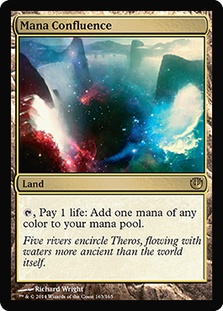



OUT
:
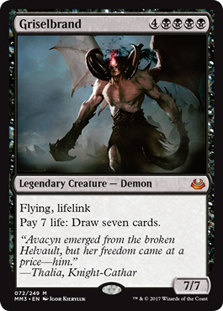


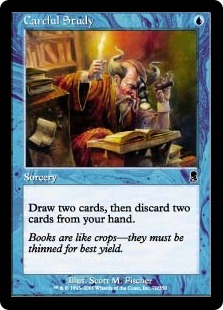


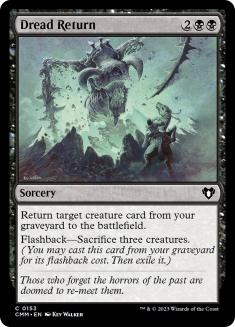
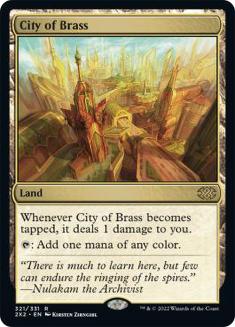

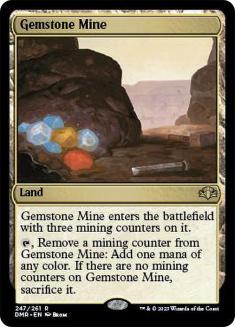

The Griselbrand plan is gone in favor of more maindeck efficiency, though Austin does still run a bunch of solid reanimation and anti-Show and Tell targets
in his sideboard. Again, no one who has played this deck for years has needed to do much to modify it. A set of day one Mana Confluences might have been a
little pricey, but most budget savvy Legacy players probably waited a few months to grab their copies anyway.
Bant Stoneblade
I don’t believe that this deck was called Bant Stoneblade in 2013-the original deck is just referred to as ‘Bant’ in the database as well as my article-but
it compares pretty favorably to today’s Bant Stoneblade lists. The core of the deck-Noble Hierarch, Stoneforge Mystic, and True-Name Nemesis-is the same at
it’s always been.
Here’s Sam Black’s fourth place Grand Prix list from November of 2013:
Creatures (15)
- 4 Noble Hierarch
- 2 Knight of the Reliquary
- 1 Qasali Pridemage
- 3 Stoneforge Mystic
- 1 Scavenging Ooze
- 4 True-Name Nemesis
Planeswalkers (1)
Lands (22)
Spells (22)

And here’s the deck that Alex Gellerman won a Premier IQ with in February of 2015:
Creatures (15)
- 4 Noble Hierarch
- 3 Knight of the Reliquary
- 1 Qasali Pridemage
- 4 Stoneforge Mystic
- 1 Scavenging Ooze
- 2 True-Name Nemesis
Planeswalkers (2)
Lands (22)
Spells (21)

IN:
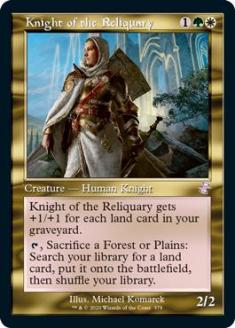
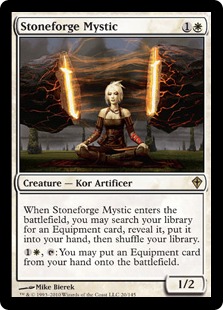
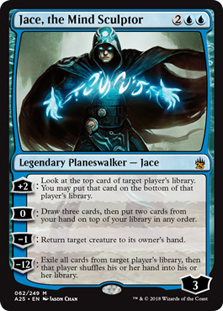



OUT:
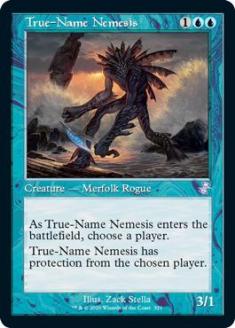

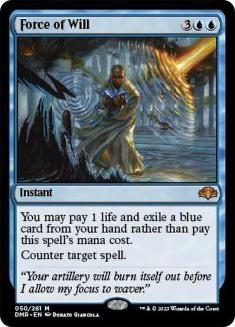
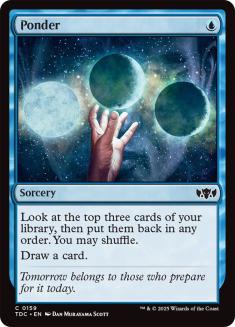


Some of the cards that were added aren’t cheap. They were all in the deck to begin with, though, albeit in lesser quantities. Anyone who spent a couple of
years piloting this has probably already made their own modifications based on either their own play preferences or their local metagame.
Death and Taxes
For players who don’t own all the fetches and duals that you need for a proper Legacy manabase, mono-colored decks are pretty alluring. Death and Taxes is
less popular than it was sixteen months ago, but it still makes up about 2.5% of the metagame (online, according to our friends at mtggoldfish), and people
still play it to high finishes at Opens and IQs. Here’s Craig Wescoe’s list that we looked at in 2013:
Creatures (26)
- 4 Mother of Runes
- 3 Serra Avenger
- 2 Aven Mindcensor
- 4 Flickerwisp
- 4 Stoneforge Mystic
- 1 Mirran Crusader
- 4 Phyrexian Revoker
- 4 Thalia, Guardian of Thraben
Lands (23)
Spells (11)

And here’s a version piloted by Kevin Stiles to a third place IQ finish on February 28th, 2015:
Creatures (25)
- 4 Mother of Runes
- 2 Mangara of Corondor
- 2 Serra Avenger
- 4 Flickerwisp
- 4 Stoneforge Mystic
- 2 Mirran Crusader
- 3 Phyrexian Revoker
- 4 Thalia, Guardian of Thraben
Lands (25)
Spells (10)

IN:
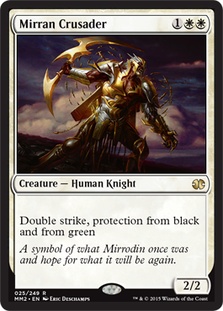
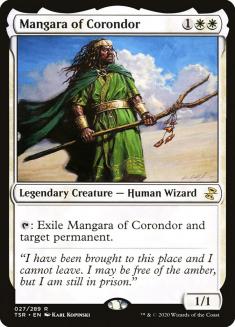

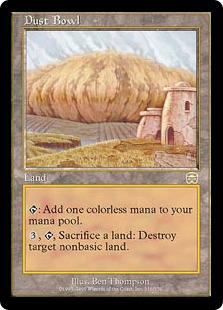
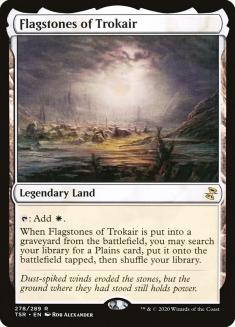




OUT:
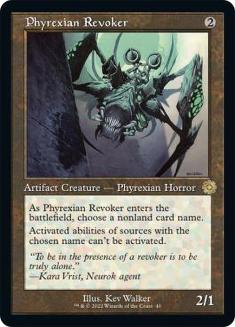
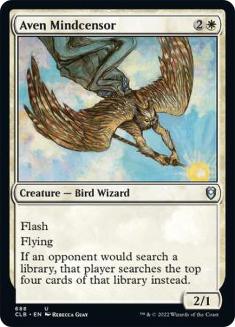

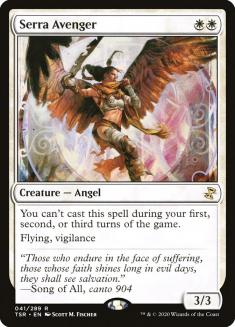



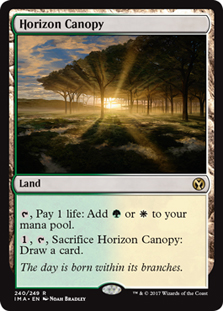

Stiles’ version is a little slower, with Flagstones and Mangaras taking the place of some of the less useful tempo creatures. This isn’t the only place the
deck has been taken, though-check out this list:
Creatures (26)
- 4 Mother of Runes
- 1 Mangara of Corondor
- 2 Serra Avenger
- 2 Gaddock Teeg
- 4 Flickerwisp
- 1 Qasali Pridemage
- 4 Stoneforge Mystic
- 1 Mirran Crusader
- 3 Phyrexian Revoker
- 4 Thalia, Guardian of Thraben
Lands (23)
Spells (11)

The basic premise is the same, but the green splash for Gaddock Teeg and Qasali Pridemage brings the old heyday of Maverick to mind.
The other two major additions to this deck have been Containment Priest and Brimaz, King of Oreskos. While this build doesn’t run them in the maindeck,
many Death and Taxes lists now run at least one copy of each. If you are a dedicated Death and Taxes player, you’re going to need at least two or three
copies, as well as a couple Council’s Judgments for the sideboard. That’ll set you back at least a hundred bucks and probably more.
I’m not sure what the future will hold for decks like this, though Wizards of the Coast really likes to print hate bears these days, so I’d expect the deck
to adapt and thrive in some form or another. If you have this deck now, you might want to consider investing in Savannahs and Windswept Heaths, though-it’s
unclear whether things will stay mono-white or the Selesnya Version will prove more powerful going forward. Needless to say, this is the deck that has
probably required the most amount of buying and tweaking if you bought it back in 2013.
Elves
Elves is a relatively straightforward combo deck, so I wouldn’t expect too many changes over the past couple of years. Here’s the deck we looked at in
2013:
Creatures (29)
- 1 Llanowar Elves
- 4 Wirewood Symbiote
- 4 Quirion Ranger
- 1 Fyndhorn Elves
- 4 Heritage Druid
- 4 Nettle Sentinel
- 4 Elvish Visionary
- 1 Scavenging Ooze
- 2 Craterhoof Behemoth
- 4 Deathrite Shaman
Lands (20)
Spells (11)

And here’s Christopher Hall’s third place finish at a Legacy Open back in late January:
Creatures (30)
- 1 Llanowar Elves
- 4 Wirewood Symbiote
- 4 Quirion Ranger
- 1 Birchlore Rangers
- 1 Wren's Run Packmaster
- 3 Heritage Druid
- 4 Nettle Sentinel
- 4 Elvish Visionary
- 2 Craterhoof Behemoth
- 4 Deathrite Shaman
- 1 Elvish Mystic
- 1 Reclamation Sage
Lands (19)
Spells (12)
Sideboard

IN:
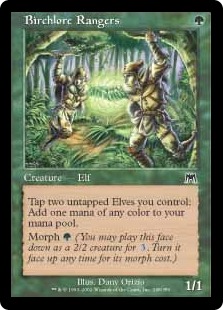
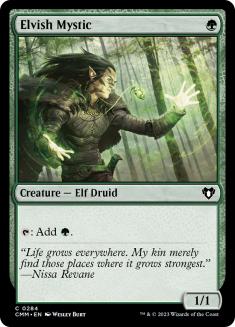
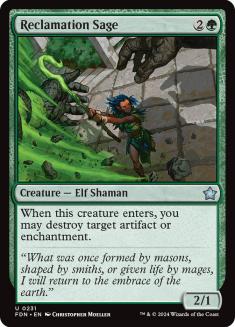
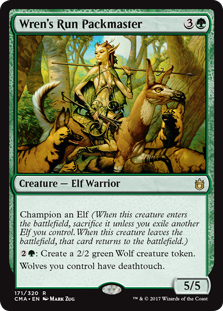
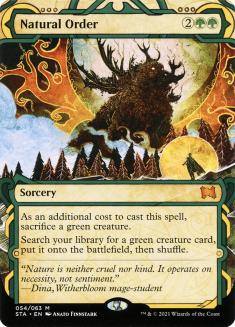



OUT:
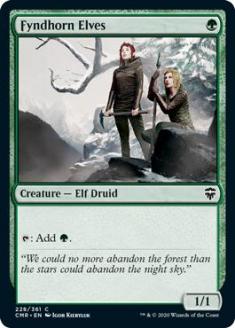
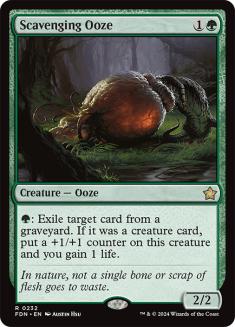
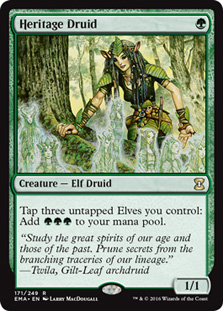

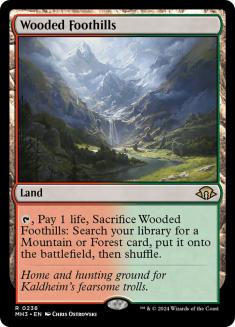

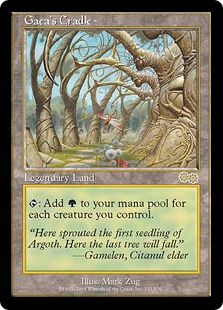

Neither deck runs red or blue, so your choice of fetchlands here mostly depends on what cards you own. Cueno’s deck has a sideboard Qasali Pridemage that
Christopher Hall has replaced with a maindeck Reclamation Sage, so the Savannah isn’t necessary anymore. Hall’s build is significantly cheaper since it
only has three Gaea’s Cradles in it, but if you’re an Elves player you’ll probably want to just buy all four anyway. Even still, Elves is pretty much the
same as it has always been, plus or minus a couple of low value creatures.
Shardless Sultai
Shardless Sultai has dropped off a little in popularity, but it’s still one of the format’s top decks. Here’s the list we looked at sixteen months ago:
Creatures (13)
Planeswalkers (4)
Lands (22)
Spells (21)
- 4 Brainstorm
- 2 Hymn to Tourach
- 4 Force of Will
- 4 Ancestral Vision
- 2 Thoughtseize
- 1 Maelstrom Pulse
- 4 Abrupt Decay
Sideboard

And here’s a first place IQ finish from the 15th of February:
Creatures (14)
Planeswalkers (2)
Lands (22)
Spells (22)

IN:
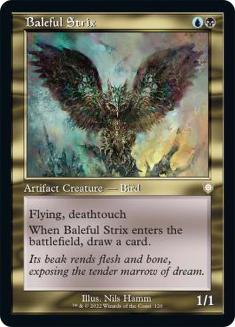
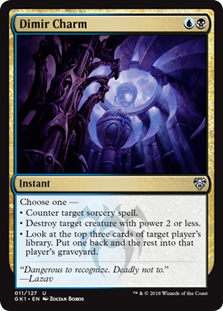



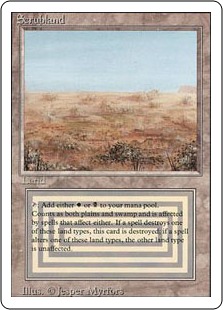

OUT:


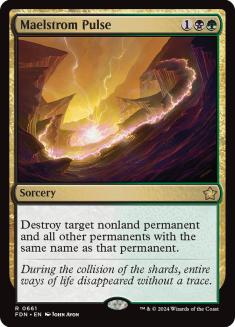
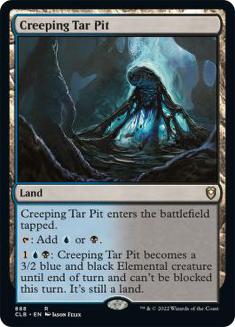

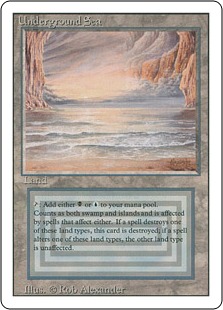

Wilson Hunter’s Shardless Sultai deck is the highest finish I can find in 2015, but most of the changes he made from the 2013 brew are slightly unorthodox.
Most Shardless Sultai decks still run both copies of Jace, the Mild Sculptor and the third Underground Sea. Realistically, the biggest additions you’d have
to make now are the second Baleful Strix (now run in this deck more often than not) and the two or three copies of Dig Through Time that have become a
consideration for most people playing this deck.
Esper Stoneblade
Stoneblade-style decks have made huge gains in the past few years. Check out this version of Esper Stoneblade from 2013:
Creatures (11)
Planeswalkers (2)
Lands (22)
Spells (25)

And compare it with a deck from an IQ in early March:
Creatures (13)
Planeswalkers (2)
Lands (23)
Spells (22)

IN:
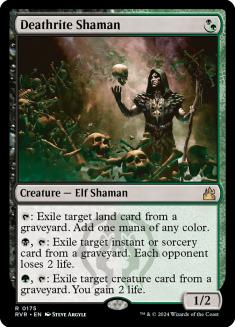



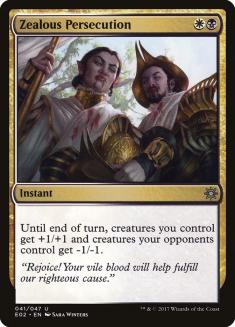
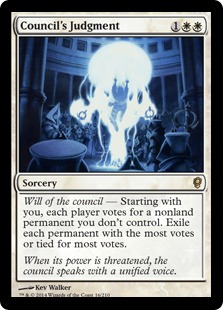




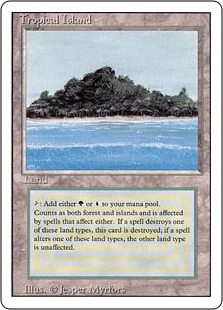

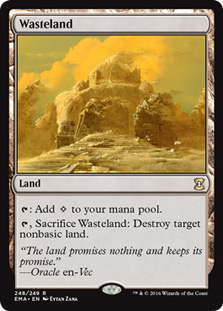



OUT
:


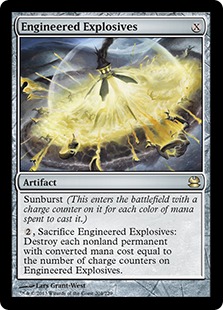
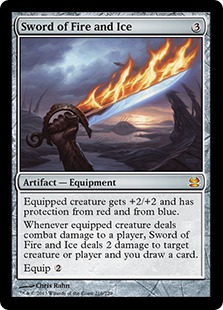

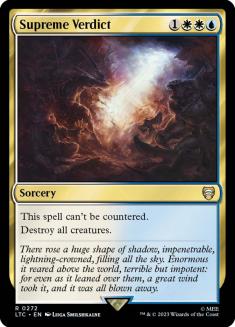





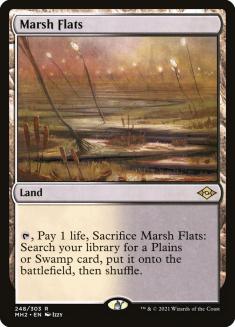


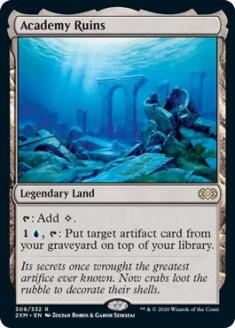

There are a lot of changes here, and that doesn’t even begin to cover how varied this deck has gotten. Deathrite Shaman has begun to see a lot more play in
brews like this, though not always as a four-of, and many Stoneblade decks now run Lingering Souls, Batterskull, Dig Through Time, Cabal Therapy, Tasigur,
the Golden Fang, or even Monastery Mentor. There are straight U/W versions with Counterspell and Gitaxian Probe and Deathblade lists that run Liliana of
the Veil as well as Bant Stoneblade decks like the one we looked at a little earlier.
The Deshaun Baylock list from 2013 certainly needs some tweaking, but you wouldn’t have to do all that much to bring it to a tournament today and do quite
well. On the other hand, it’s equally possible to have spent a bunch of money fiddling with this deck over the past few years in order to optimize it based
on your playstyle and metagame. It’s really up to the pilot.
Before we revise our list of multi-deck format staples, I’d like to take a look at a few decks that I didn’t discuss in 2013 but would like to talk a
little about now. Let’s start with a juicy one:
Miracles
Counter-top decks aren’t a new thing. In fact, they were fairly old hat by 2013. I didn’t cover them in my article at the time because they were going
through a bit of a downswing, and it looked as if the format was moving away from pure control decks. Nope! Today, you can make an argument that Miracles
is the most powerful deck in the format. Here’s Reid Duke’s list from the most recent Invitational:
Planeswalkers (3)
Lands (23)
Spells (34)

Dig Through Time and Council’s Judgment are the only recent additions here-the rest of these cards have been played in Miracles decks since their
inception. If you’re looking for a powerful and timeless deck to invest in, Miracles is a very good call.
Infect
Infect was a rogue deck back in 2013, but today it’s a tier one strategy. The most representative deck from 2013 that I could find was this Olle Rade brew
from November of that year:
Creatures (12)
Lands (18)
Spells (30)
- 4 Brainstorm
- 4 Daze
- 2 Berserk
- 4 Invigorate
- 2 Crop Rotation
- 2 Might of Old Krosa
- 1 Ponder
- 4 Spell Pierce
- 4 Vines of Vastwood
- 3 Gitaxian Probe
Sideboard

Compare that to Todd Anderson’s deck from the invitational:
Creatures (12)
Lands (20)
Spells (28)

IN:
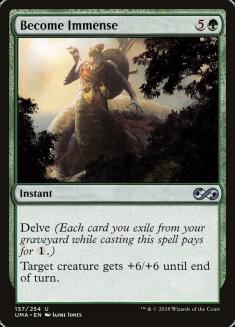




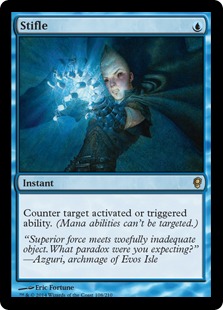






OUT:
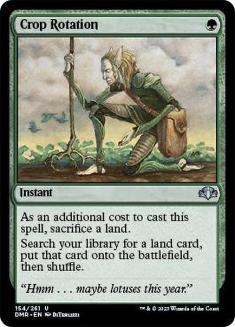
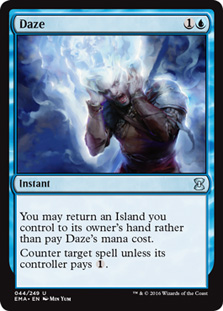
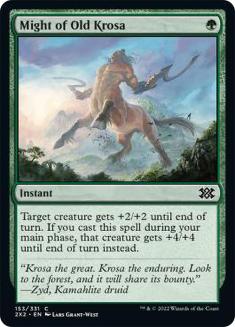



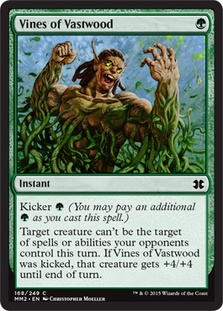

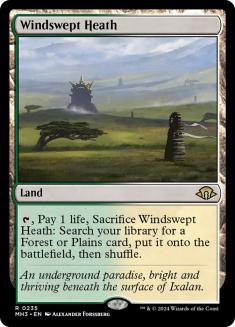

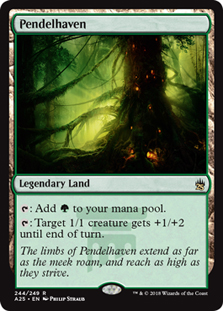

The decks are similar, but Todd Anderson’s version (like most 2015 Infect decks) has a few more control pieces and fewer pump spells. Force of Will gives
Infect game against combo, without which I’m not convinced it would be able to be more than a fringe player. As is, I expect Infect to do fine going
forward. It can only get better if we get more solid infect cards whenever we next return to Mirrodin.
Lands
Lands has always been a pretty good deck, but an Italian Legends copy of The Tabernacle at Pendrell Vale is going to set you back $600-and that’s just the
start. In order to play this deck, you need to drop a couple of grand on cards that aren’t all that great in any other deck. Lands is pretty sweet, though.
Check out Jason Coleman’s list from the invitational:
Lands (34)
Spells (26)

There’s not much more to say about this deck-you’ve either got the will and the ability to build Lands, or you don’t. It’s certainly not the right choice
for anyone looking to dip their toes into the Legacy format, but it is quite fun to play.
Storm
Having lived in Los Angeles since 2008, I’m a little biased toward Storm decks. LA is a Storm town, and I’ve faced off against Storm many, many times. Even
when the metagame isn’t great for spewing out a giant Tendrils of Agony, there are quite a few players-especially online-who aren’t going to hang up their
Lion’s Eye Diamonds anytime soon.
Check out this Storm list from the Invitational:
Lands (15)
Spells (45)

The best part about this deck? It hasn’t changed in years. This is pretty much the Storm deck that I played against when I first moved to Los Angeles minus
the “recent” additions of Past in Flames and Gitaxian Probe. Storm might not be the best choice to battle against a sea of Delver and Stoneblade decks that
all run four maindeck copies of Force of Will, but it’s been a sold deck for years as long as you’re willing to put in the time to learn how to play it.
Format Staples
I made a list of format staples back in 2013 in order to gauge the cost of buying into Legacy. I deliberately left off cards like Gaea’s Cradle and
Tendrils of Agony that were only really played in a single deck, instead opting to cover cards that saw play in at least two top strategies. Let’s take a
look at these lists now and see what happened to their prices over the past eighteen months, starting with the creatures:
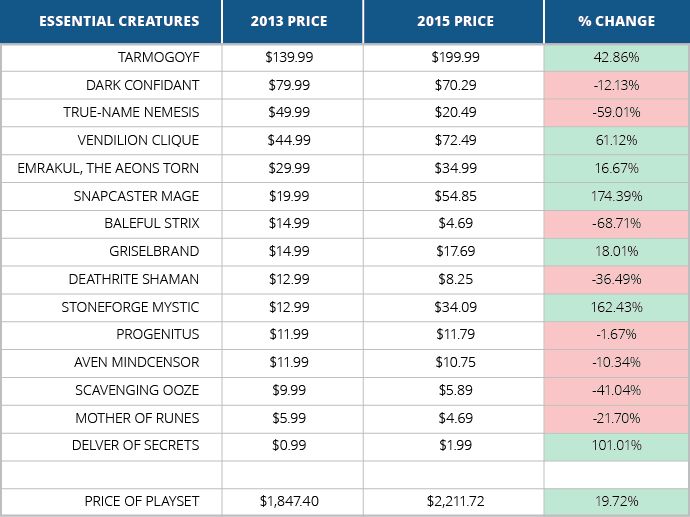
Of the fifteen creatures on this list, eight of them have dropped in price since 2013. Unfortunately for anyone who didn’t buy in back then, the other
seven rose in value so much that the entire index jumped by almost 20%. The majority of those gains were caused by Tarmogoyf, Vendilion Clique, Snapcaster
Mage, and Stoneforge Mystic. The first three of those cards saw their prices go up thanks to Modern play, and Stoneforge jumped because it’s such a crucial
card in both Legacy and Commander. In fact, I doubt we’ve seen the last massive price increase from Stoneforge Mystic unless it’s reprinted in a From the
Vault set at some point over the next couple of years.
Scavenging Ooze and Deathrite Shaman both dropped after rotating out of Standard, and they’re both close to their historic lows. Ooze doesn’t see as much
play these days, but Deathrite Shaman is just as popular as ever in Legacy. At some point, people are going to assume it’ll be unbanned in Modern, too, and
the price will jump on the back of those rumors. I’m buying at current retail.
Baleful Strix and True-Name Nemesis both dropped in price because WotC released another slew of the Commander 2013 deck that contains them both. Those are
long gone now, and their prices will likely start to climb over the next few months. I like them both as low-risk long-term gainers
No Longer A Multi-Deck Staple:
Progenitus, Aven Mindcensor, and Mother of Runes.
Progenitus doesn’t really see Legacy play anymore, and the two white creatures are pretty much limited to a single deck. Dark Confidant is dangerously
close to leaving the staples list as well, but I’m keeping it on the list mostly out of nostalgia.
Cards to Add:
- Containment Priest – $17.25
- Grim Lavamancer – $6.29
- Monastery Swiftspear – $2.49
- Nimble Mongoose – $1.65
- Noble Hierarch – $62.49
- Tasigur, the Golden Fang – $7.65
- Young Pyromancer – $2.89
Containment Priest is a sideboard darling for any deck running white, and I can’t see it dropping in price any further unless WotC decides to reprint it as
something other than a judge foil. Nimble Mongoose and Grim Lavamancer have both been Legacy staples before, but they’re seeing more play now than they
have in years. Noble Hierarch makes the cut now since it’s a staple in Infect as well as Bant Stoneblade, though I expect the price to drop once it’s
officially spoiled in Modern Masters 2015. Tasigur is a one-of in lots of different decks, and I love foils to double or even triple in price over the next
year or two.
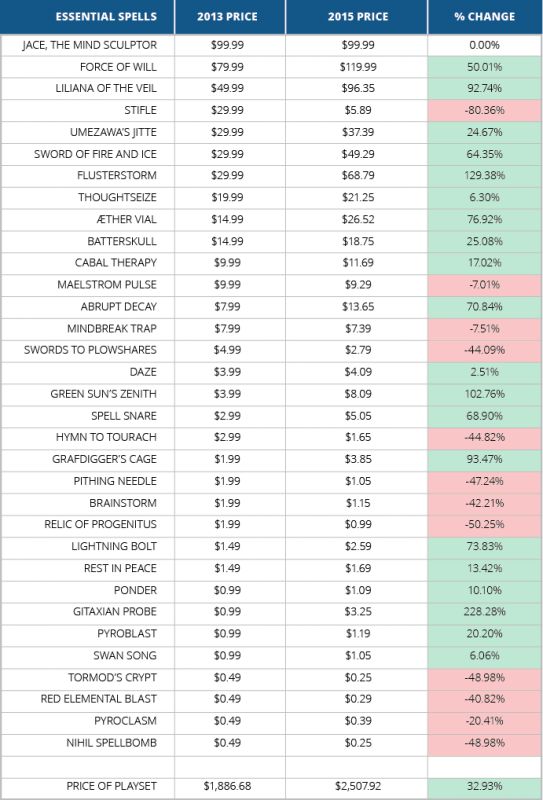
Congratulations to Jace, the Mind Sculptor for being the only card on any of these lists to neither gain nor lose value in sixteen months-quite an
accomplishment for a card whose price tag has always been one of its biggest talking points.
Most of the biggest losers on this list were reprinted in Conspiracy. Stifle, Swords to Plowshares, and Brainstorm should start to tick up again now that
that set is out of print. None of them are Modern legal, either, so there’s no risk of a Modern Masters 2015 reprint.
If I could only make one spec call in this entire article, it would be Stifle. It can be played in half the top decks in Legacy, and it has only been
printed in Scourge and Conspiracy. There’s a ton of room for this card to double up over the next year or so.
Most of the gainers on this list have more to do with Modern. Liliana of the Veil, Sword of Fire and Ice, Aether Vial, Batterskull, Abrupt Decay, and even
Spell Snare are Modern staples that are also useful in Legacy. Force of Will, Umezawa’s Jitte, Flusterstorm, and Green Sun’s Zenith are all Legacy-only
cards, though, and they’ve made major gains due to increased scarcity and a still-growing player base. Legacy might be a niche format that’s growing much
slower than Standard and Modern, but the number of players interested in slinging Force of Wills on Sunday mornings is still going up.
No Longer A Multi-Deck Staple:
Mindbreak Trap, Maelstrom Pulse, and Hymn to Tourach.
These cards just don’t see as much play as they used to. Mindbreak Trap is a mythic rare, so it has the best shot at rebounding and making a splash at some
point in the future. I like it in the $7-$8 range.
Cards to Add:
- Blood Moon – $23.55
- Council’s Judgment – $9.05
- Counterspell – $0.89
- Dig Through Time – $5.99
- Divert – $3.55
- Forked Bolt – $3.29
- Intuition – $24.65
- Leyline of Sanctity – $34.19
- Lion’s Eye Diamond – $86.29
- Lotus Petal – $4.69
- Omniscience – $18.15
- Preordain – $1.19
- Sensei’s Divining Top – $33.69
- Show and Tell – $64.79
- Spell Pierce – $2.19
- Wear // Tear – $0.75
Most of these spells were staples in 2013, too, but they weren’t being played in more than one of the format’s top decks. Now that we’ve got seven
different flavors of Delver and Stoneblade alongside two different Show and Tell variants, I’ve added a bunch of stuff to the list that probably should’ve
been accounted for a long time ago.
In addition, cards like Blood Moon and Leyline of Sanctity have begun to see a lot more play out of sideboards than they did a few years ago. Both of these
cards have also made major gains in Modern, and I’d expect to see them both show up in Modern Masters 2015.
I love Council’s Judgment as a spec target. It’s a Conspiracy-only card that’s fantastic in Cube and Commander, so I can’t see it dropping in price anytime
soon. I’m also a big fan of Dig Through Time, but the fact that it’s great in Standard and banned in Modern means that we should be able to pick them up
for $3 or so during set rotation. I’m holding off for now, though I do think that the foils will start to climb well before next summer.
I don’t know if there’s much money to be made, but Wear//Tear has the look of a card that will be $3-$4. Dragon’s Maze was an unpopular set, and I don’t
think they’ll be reprinting cards with fuse in random causal products or new sets.
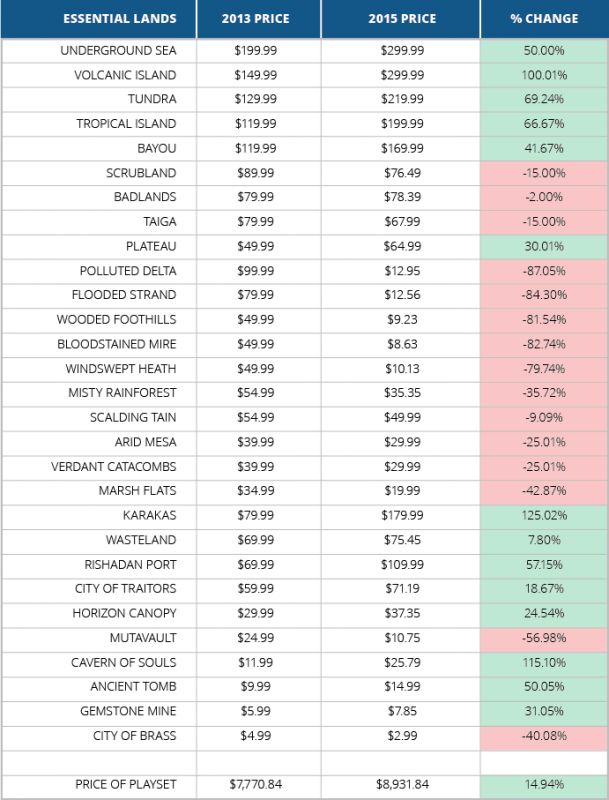
Unreal. Check out how much those fetchlands dropped-all five Onslaught lands cratered by at least 79%, with Polluted Delta tanking by a whopping 90%. The
Zendikar fetchlands haven’t done much better, either. Scalding Tarn went as high as $100 in between when my 2013 article was written and today, but all
five are down between 9% and 42% thanks to speculation that they’ll be reprinted in Battle for Zendikar this autumn.
Needless to say, now is the time to buy the Khans/Onslaught fetchlands. Two of them have dropped below the $10 mark, and the most expensive one is still
under $13. I doubt they can drop too much further. As for the Zendikar fetches, I’m holding off until fall if I can.
Of course, the land index still went up 15% thanks to the absurd rate that the blue dual lands rose over the past sixteen months. I don’t think that those
price increases can continue without the Legacy format becoming truly degenerate, but I don’t think we’ll see them drop off much unless the format changes
significantly. It’s still fine to trade for Tundras and Underground Seas if you need them.
As for me, I’ll be focusing on trading for all of the ‘bad’ duals that I can find. No reserved list staple with as much raw power as Scrubland or Taiga
should be dropping by 15% ever, and all it’ll take is one great deck for any of those lands to double up or more. It’s not like they’re printing any more
dual lands.
Cards to Remove:
None.
I could probably take something like Cavern of Souls off this list, and we haven’t seen a ton on Horizon Canopy lately, but I hesitate to take any land off
the staples list-they always tend to come back around when you least expect it.
Cards to Add:
Mana Confluence ($9.89).
Similar to what happened to Cavern of Souls, Mana Confluence will probably drop off toward $5 at rotation before shoot back up over $20 long term. I’ll be
buying several sets on spec this summer.
Ultimately, it feels like there are two kinds of Legacy decks. If you pick up something like Sneak and Show, Dredge, or Elves, you can plug and play for
the next several years without worrying too much about additions, though you might have to fight through some pretty nasty sideboard cards along the way.
If you go with a Stoneblade or Delver deck, you’re going to be able to modify it more, but the temptation to keep tinkering with it could get pretty
expensive. If you go in that direction, it’s best to try and collect as many of the above staples as you can.
Ultimately, neither strategy would have been a bad investment in late 2013. Despite the falling fetchland prices, you could still cash out any of those
decks today for more than you paid sixteen months ago. Will that still be true in the year 2017? I’m betting that it will. If you want to buy a Legacy
deck, go for it.
This Week’s Trends
– The Dragons of Tarkir have landed! Sidisi, Undead Vizier made the biggest splash in the Standard portion of the Invitational, but it was still just a
two-of, and I doubt we’ll see it in greater quantities moving forward. I loved the card in my set review, and I still think it’ll be a Standard staple, but
$6.49 in a little high for a rare that isn’t a multi-deck four-of or an Eternal card. I see Sidisi, Undead Vizier settling in around $5 before long.
– Deathmist Raptor and Dromoka’s Command both showed up as well, making waves in Chris Andersen’s G/W Devotion deck. Check it out:
Creatures (30)
- 4 Elvish Mystic
- 3 Polukranos, World Eater
- 4 Sylvan Caryatid
- 3 Voyaging Satyr
- 4 Courser of Kruphix
- 3 Genesis Hydra
- 4 Whisperwood Elemental
- 1 Temur Sabertooth
- 4 Deathmist Raptor
Lands (24)
Spells (6)

I loved both of these cards, and the fact that they’ve slotted in exactly where I expected them to means that I don’t see the prices coming down for at
least another couple of weeks. Many people have G/W Devotion already built, and they’re going to want to upgrade their deck ASAP. Deathmist Raptor should
end up around $15 unless it makes a splash in another deck as well, so I’m selling now at $20+.
– Both Zurgo Bellstriker and Thunderbreak Regent showed up in red-based decks, making me feel better about them long term, as well. Both of those cards are
going to be four-ofs in their respective strategies, though Thunderbreak Regent doesn’t have any room to grow at $10.99 unless it starts to show up in
multiple top decks. Zurgo has a little more upside at just $3.50, and I expect we’ll see him in the $4-$5 range going forward.
– Dragonlord Ojutai was a sexy breakout pick early in the tournament, and it’s still sold out at $15.35 despite the fact that none of the Ojutai decks
ended up doing all that well. It speaks to just how much we want those Elder Dragons to be top tier players in Standard. I’m not convinced yet, and I’m
selling my copies of Ojutai into the hype.
– Most of the pros aren’t going to be revealing their Pro Tour tech yet, of course, so we’re still very early into seeing the impact of Dragons of Tarkir
on Standard. If Dragons ends up being a bust, some of the fringier cards like Sidisi could rise in price simply because the value in the set has to go
somewhere. It’s worth keeping in mind as we continue to monitor how things are shaking out. I still think that we’re going to see Dragonlord Silumgar and
Surrak, the Hunt Caller make a major splash, but right now we’re still playing the waiting game. In the meantime, I’m trading my Dragons cards for Khans
rares that we already know are format staples.

